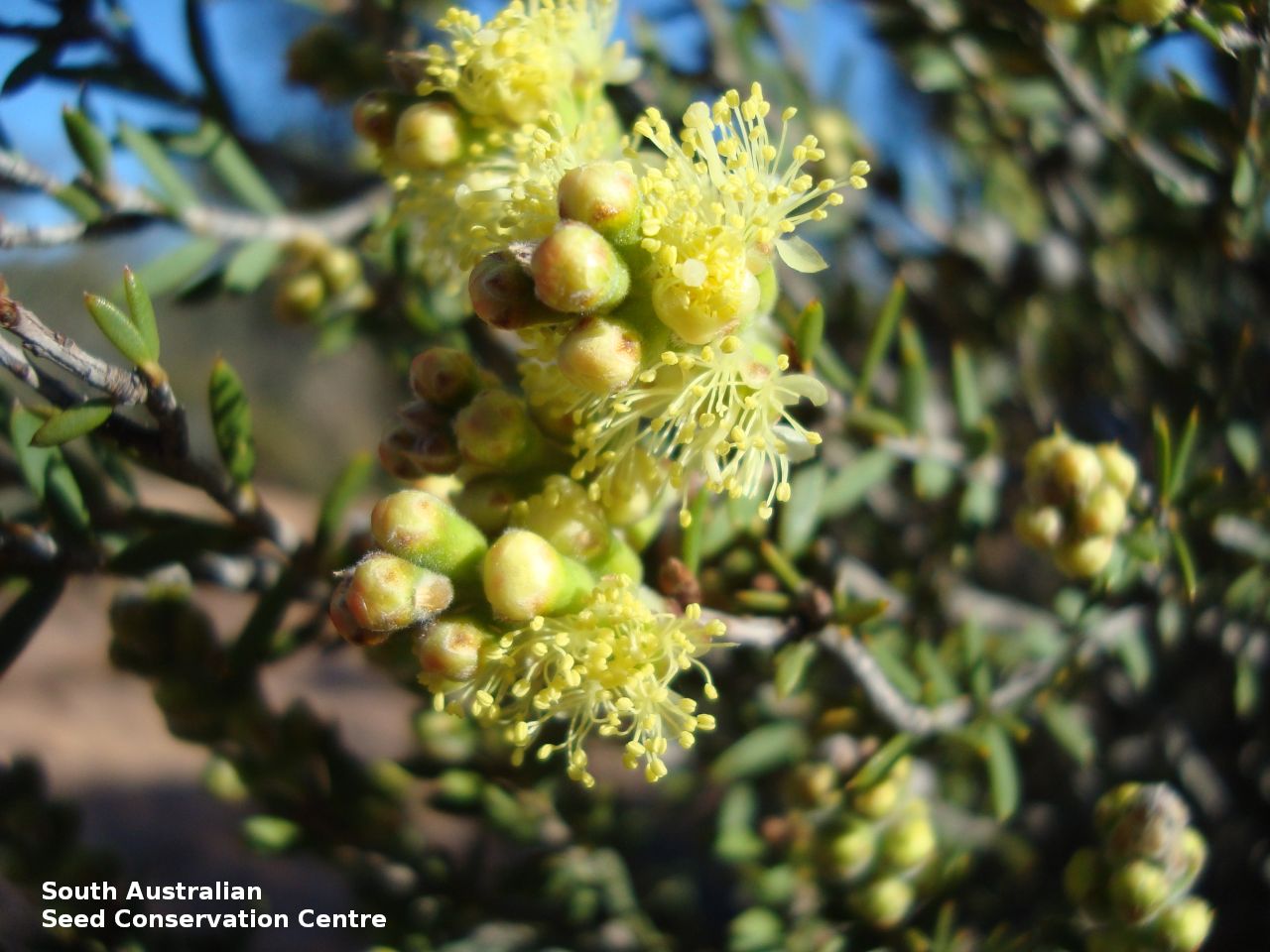




Etymology
Melaleuca, from the Greek 'melas', meaning black and 'leucon', meaning white, alluding to the contrasting colours of the bark of the first species described, which is said to have had white branches against a black trunk. Leiocarp, from the Greek 'leios', meaning smooth and 'Karpos', meaning fruit, referring to the fruiting hypanthium of this species being distinctively smooth.
Distribution and status
Found in the Gawler Ranges and the northern Eyre Peninsula in South Australia growing on rocky lateritic soils and red sand on hillslopes, outcrops and sandplains. Also found in Western Australia. Native. Rare in South Australia. Common in Western Australia.
Herbarium regions: Nullarbor, Gairdner-Torrens, Eyre Peninsula
NRM regions: Alinytjara Wilurara, Eyre Peninsula, South Australian Arid Lands
AVH map: SA distribution map (external link)
Plant description
Shrub to 5 m high, with rough, furrowed, dark-grey or grey-black bark. Leaves are spirally arranged, to 21 mm long and 5 mm wide; narrow lance-shaped or linear with a very short stalk and tapering to a sharp point. Inflorescences occur at or near the ends of the branches, in a cylindrical spike to 15 mm long and 28 mm diameter, with 3 to 14 yellow-cream flowers. Flowering between August and December. Fruits are grey-brown smooth, woody spherical capsule to 9 mm diameter, in short loose clusters on a woody stem. Seeds are tiny brown rectangular or pyramidal seed to 2.5 mm long and 0.5 mm wide. Seed embryo type is folded.
Seed collection and propagation
Collect seeds between January and December. Collect capsules that are large and hard, with closed valves. Place the capsules in a tray and leave to dry for at least two weeks or until all the valves are open. Then place all the capsules into a bucket with a lid if possible and shake hard to dislodge the seeds from the capsules. Use a sieve to separate the seeds from the capsules. The fine material will contain the seeds and other flowering material. It is very difficult to separate the seeds from this other material as the size, shape and weight are very similar, however the seeds will be a darker brown. Store the seeds with a desiccant such as dried silica beads or dry rice, in an air tight container in a cool and dry place. From one collection, the seed viability was high, at 100%. Seeds are non-dormant, viable seed should germinate readily.
| Location | No. of seeds (weight grams) | Number of plants | Date collected | Collection number Collection location | Date stored | % Viability | Storage temperature |
|---|---|---|---|---|---|---|---|
| BGA | 22,000 (42.36 g) | 20 | 20-Sep-2009 | TST778 Eyre Peninsula | 1-Jun-2010 | 100% | -18°C |
Number of plants: This is the number of plants from which the seeds were collected.
Collection location: The Herbarium of South Australia's region name.
% Viability: Percentage of filled healthy seeds determined by a cut test or x-ray.